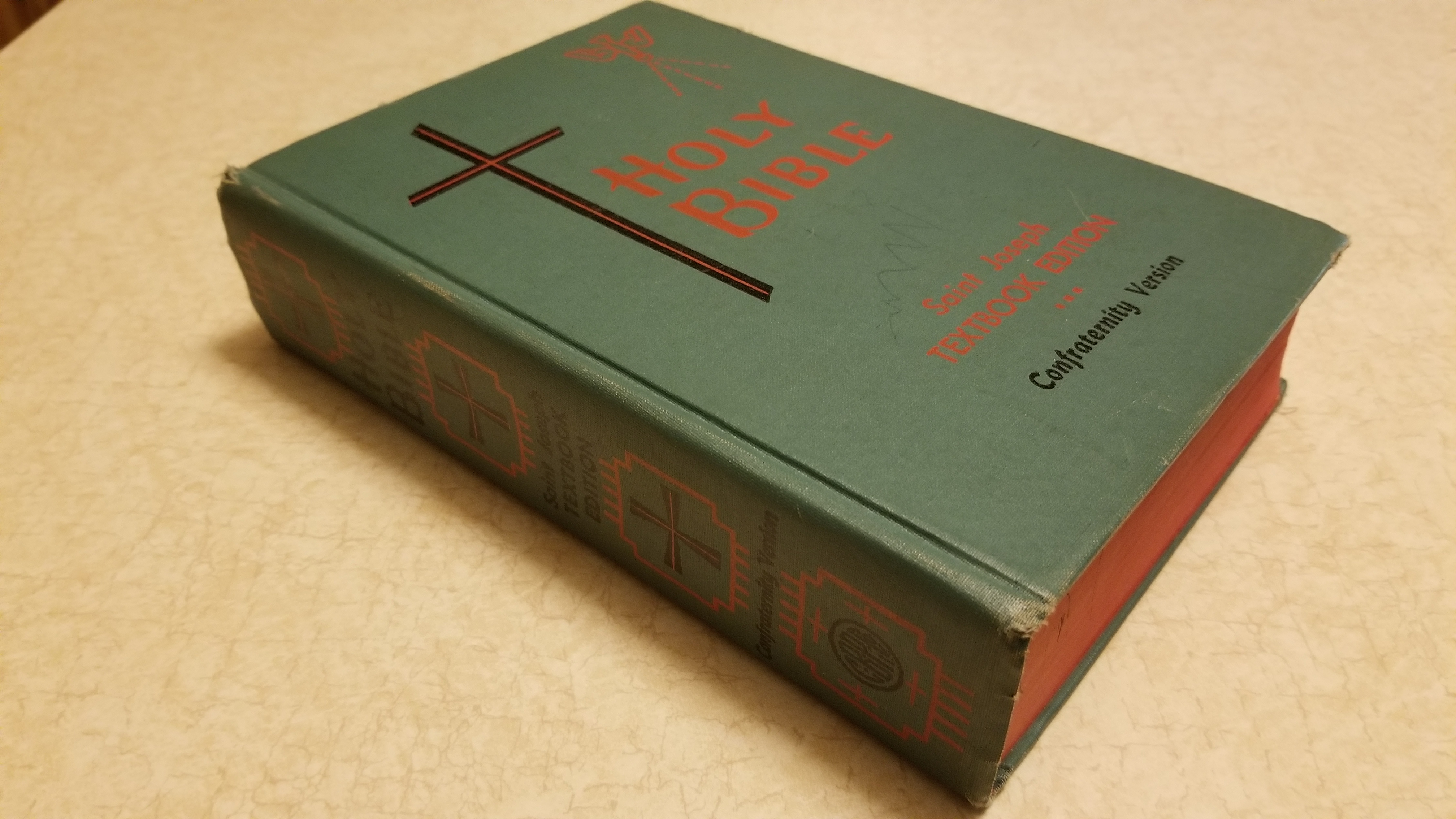
I’ve been spending some quality time with the Confraternity Bible this week, reading through the Gospel of Mark. I’ll also be reading 2 Corinthians to make sure I have a sample of how the translation dealt with Paul’s letters. I think it’s useful to read a translation at length to develop a sense for its style and translation choices. In the meantime, I’ll leave you with a passage from Mark 7:31-37 which provides a good flavor of how the Confraternity New Testament reads:
And departing again from the district of Tyre, he came by way of Sidon to the sea of Galilee, through the midst of the district of Decapolis. And they brought to him one deaf and dumb, and entreated him to lay his hand upon him. And taking him aside from the crowd, he put his fingers into the man’s ears, and spitting, he touched his tongue. And looking up to heaven, he sighed, and said to him, “Ephpheta,” that is, “Be thou opened.” And his ears were at once opened, and the bond of his tongue was loosed, and he began to speak correctly. And he charged them to tell no one. But the more he charged them, so much the more did they continue to publish it. And so much the more did they wonder, saying, “He has done all things well. He has made both the deaf to hear and the dumb to speak.”
I enjoy comparing this to my newer NABRE (2011 printing I think). I had forgotten how archaic some of the language was. I do like how it sounds when read aloud, though.
I agree. It has a nice cadence for public reading in many passages.